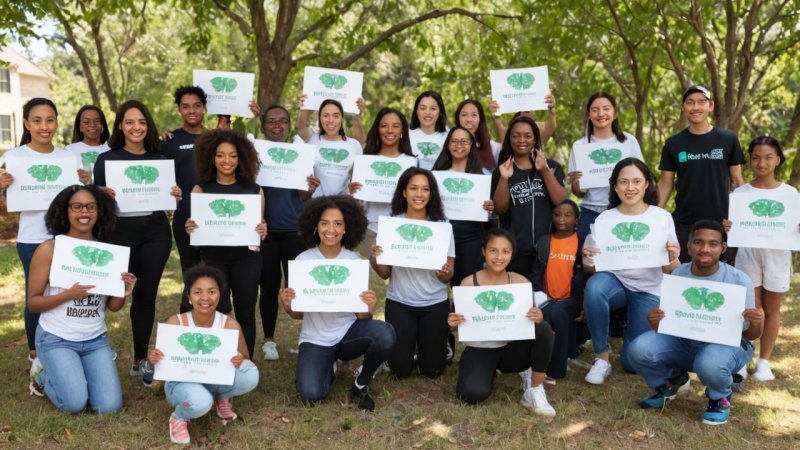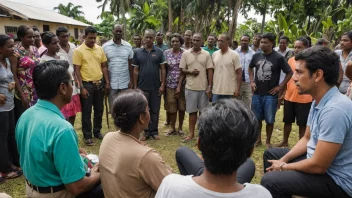As the world grapples with the pressing issues of climate change, pollution, and biodiversity loss, the role of youth in environmental activism has become increasingly vital. Young people are not just the leaders of tomorrow; they are the changemakers of today. Their energy, creativity, and passion for justice can drive significant social change and influence policy decisions. This article explores various strategies for engaging youth in environmental activism, highlighting successful initiatives, offering practical guidance for involvement, and examining the broader implications of youth participation in the fight for a sustainable future.
The Importance of Youth Engagement in Environmental Issues
Youth engagement in environmental activism is essential for several reasons. Firstly, young people are disproportionately affected by environmental degradation, as they will inherit the consequences of today's decisions. Secondly, youth bring fresh perspectives and innovative solutions to long-standing problems. Finally, engaging youth fosters a sense of responsibility and empowerment, encouraging them to become active participants in their communities and beyond.
Understanding the Youth Perspective
To effectively engage youth, it is crucial to understand their perspectives on environmental issues. Surveys and studies have shown that young people prioritize climate action, sustainability, and social justice. They are increasingly aware of the interconnectedness of environmental and social issues, recognizing that environmental degradation often exacerbates inequality. By tapping into these values, activists can create initiatives that resonate with young people's beliefs and aspirations.
Strategies for Engaging Youth in Environmental Activism
There are numerous strategies for fostering youth engagement in environmental activism. Here are some of the most effective approaches:
1. Education and Awareness
Education is the cornerstone of youth engagement. Providing young people with information about environmental issues helps them understand the challenges and empowers them to take action. This can be achieved through:
- Workshops and Seminars: Organize events that cover various environmental topics, featuring experts and interactive sessions.
- School Programs: Integrate environmental education into school curricula, encouraging critical thinking and practical solutions.
- Online Resources: Utilize social media, blogs, and podcasts to reach a wider audience and share valuable information.
2. Community Involvement
Creating opportunities for young people to engage with their communities can foster a sense of belonging and responsibility. Initiatives may include:
- Local Clean-Up Events: Organize community clean-up days where youth can participate in removing litter from parks, beaches, and streets.
- Tree Planting Campaigns: Collaborate with local organizations to plant trees in urban areas, enhancing green spaces and promoting biodiversity.
- Environmental Clubs: Establish clubs in schools and communities that focus on environmental advocacy, education, and action.
3. Empowerment Through Leadership Opportunities
Empowering youth to take on leadership roles is crucial for fostering long-term commitment to environmental activism. This can be achieved through:
- Mentorship Programs: Pair young activists with experienced leaders in the environmental movement to provide guidance and support.
- Youth Councils: Establish councils that allow young people to voice their opinions and contribute to decision-making processes related to environmental policies.
- Skill-Building Workshops: Offer training in public speaking, advocacy, and organizing to equip youth with the skills needed to lead initiatives.
4. Utilizing Technology and Social Media
In today's digital age, technology plays a crucial role in mobilizing youth. Leveraging social media platforms can enhance outreach and engagement. Here are some ideas:
- Social Media Campaigns: Launch campaigns that encourage youth to share their environmental initiatives and experiences using specific hashtags.
- Online Challenges: Create challenges that encourage youth to adopt sustainable practices, such as reducing plastic use or conserving energy.
- Virtual Events: Host webinars and online forums to discuss environmental issues and share success stories.
5. Collaborating with Influencers and Organizations
Partnering with influencers and established organizations can enhance visibility and credibility. Collaborations can include:
- Joint Initiatives: Work with popular youth influencers to promote environmental campaigns and reach a larger audience.
- Partnerships with NGOs: Collaborate with non-governmental organizations that focus on environmental issues to leverage their expertise and resources.
- Engagement with Local Governments: Encourage local leaders to support youth-led initiatives and provide necessary resources.
Highlighting Successful Youth-Led Initiatives
Numerous youth-led initiatives around the globe have made significant impacts on environmental issues. Here are a few notable examples:
1. Fridays for Future
Started by Greta Thunberg, the Fridays for Future movement has inspired millions of young people worldwide to participate in climate strikes. The movement emphasizes the urgency of climate action and has successfully pressured governments to prioritize environmental policies.
2. The Sunrise Movement
This U.S.-based movement focuses on mobilizing young people to advocate for a Green New Deal. The Sunrise Movement has successfully engaged youth in political activism, pushing for systemic changes to combat climate change.
3. Global Youth Biodiversity Network
This international network empowers youth to engage in biodiversity conservation efforts. By providing resources and training, the network encourages young people to advocate for policies that protect ecosystems and promote sustainable practices.
Challenges and Solutions
While engaging youth in environmental activism is crucial, several challenges can hinder participation:
1. Lack of Awareness
Many youth may not be aware of the environmental issues affecting their communities. To address this, educational campaigns and outreach efforts should be intensified.
2. Limited Access to Resources
Not all young people have access to the resources needed to participate in activism. Providing grants, materials, and training can help overcome this barrier.
3. Disconnection from Nature
Urbanization has led to a disconnection from nature, making it challenging for youth to engage with environmental issues. Organizing outdoor activities and nature-based programs can help bridge this gap.
Conclusion
Engaging youth in environmental activism is essential for creating a sustainable future. By implementing effective strategies, fostering leadership, and highlighting successful initiatives, we can empower young people to take action and become advocates for change. Youth engagement not only addresses pressing environmental issues but also builds a generation of informed, responsible citizens committed to protecting our planet. As we continue to face global challenges, it is imperative to recognize and support the role of youth in the environmental movement.






